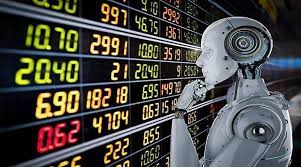
In the fast-paced world of foreign exchange (forex) trading, technology continues to revolutionize the way traders interact with the markets. Among the latest advancements is the proliferation of forex robots, also known as expert advisors (EAs). These automated trading systems have gained significant popularity among traders seeking to capitalize on market forex robot without the need for constant manual intervention. But what exactly are forex robots, and how do they work?
Understanding Forex Robots:
Forex robots are computer programs designed to execute trades on behalf of traders in the forex market. They operate based on pre-defined trading strategies, algorithms, and parameters set by the trader or the developer. These robots are capable of analyzing market conditions, identifying trading opportunities, and executing trades with speed and precision.
How Forex Robots Work:
Forex robots operate on a set of rules programmed into their algorithms. These rules can vary widely, ranging from simple moving average crossovers to complex mathematical models based on technical indicators, price action patterns, or fundamental data analysis.
When deployed, a forex robot continuously monitors the market, scanning for trade signals based on its programmed criteria. Once it identifies a potential opportunity, such as a buy or sell signal, the robot automatically executes the trade according to the specified parameters. This automation eliminates the need for manual intervention, allowing traders to execute trades 24/7 without being tied to their screens.
Advantages of Forex Robots:
- Emotion-Free Trading: One of the primary benefits of forex robots is their ability to trade without emotions. Unlike human traders who may succumb to fear, greed, or hesitation, robots strictly adhere to their programmed rules, helping to eliminate costly emotional errors.
- 24/7 Trading: Forex robots can operate continuously, even when the trader is asleep or away from the computer. This round-the-clock trading capability allows traders to capitalize on opportunities in different time zones and market sessions.
- Backtesting and Optimization: Before deploying a forex robot in live trading, traders can backtest their strategies using historical market data. This process allows them to assess the robot’s performance under various market conditions and optimize its parameters for better results.
- Speed and Efficiency: Forex robots can execute trades with lightning-fast speed, reacting to market movements in milliseconds. This rapid execution helps traders capitalize on fleeting opportunities and ensures timely order placement.
- Diversification: By using multiple forex robots with different strategies or trading instruments, traders can diversify their trading portfolios and reduce overall risk. This approach allows them to spread their exposure across various markets and increase the potential for profit.
Challenges and Considerations:
While forex robots offer numerous advantages, they are not without their challenges and considerations:
- Over-Optimization: Excessive optimization of a forex robot’s parameters based on historical data can lead to overfitting, where the robot performs well in backtests but fails to deliver similar results in live trading due to changing market conditions.
- Market Volatility: Forex markets are inherently volatile, and sudden price fluctuations can trigger unexpected behavior in automated trading systems. Traders must carefully monitor their robots and be prepared to intervene or adjust settings during periods of high volatility.
- Technical Failures: Like any software, forex robots are susceptible to technical failures, such as connectivity issues, server outages, or programming errors. Traders should have contingency plans in place to address such eventualities and minimize potential losses.
- Lack of Adaptability: While forex robots excel at executing predefined strategies, they may struggle to adapt to evolving market conditions or unforeseen events. Traders must periodically review and update their robots’ algorithms to ensure continued effectiveness.
Conclusion:
Forex robots represent a powerful tool for traders looking to automate their trading processes and capitalize on market opportunities with speed and efficiency. By leveraging advanced algorithms and technology, these automated systems offer numerous benefits, including emotion-free trading, 24/7 operation, and backtesting capabilities.
However, traders must exercise caution and diligence when deploying forex robots, as they entail certain challenges and considerations. By understanding the strengths and limitations of automated trading systems and implementing robust risk management practices, traders can harness the full potential of forex robots to enhance their trading performance and achieve their financial goals.